Solenoid Valve
Hewcho specializes in the manufacturing of four type material solenoid valve: Brass, Stainless Steel, UPVC/CPVC, and Cast iron. Also we can accept OEM valve based on your requirement.
At our factory, we leverage cutting-edge automated assembly machines to enhance our production efficiency and quality. Our assembly process automatically fasten the two parts of the valve body using screws, ensuring precision and durability in every unit produced. Further elevating our commitment to quality, we manufacture our own coils using copper to enhances the safety and reliability of our valves.
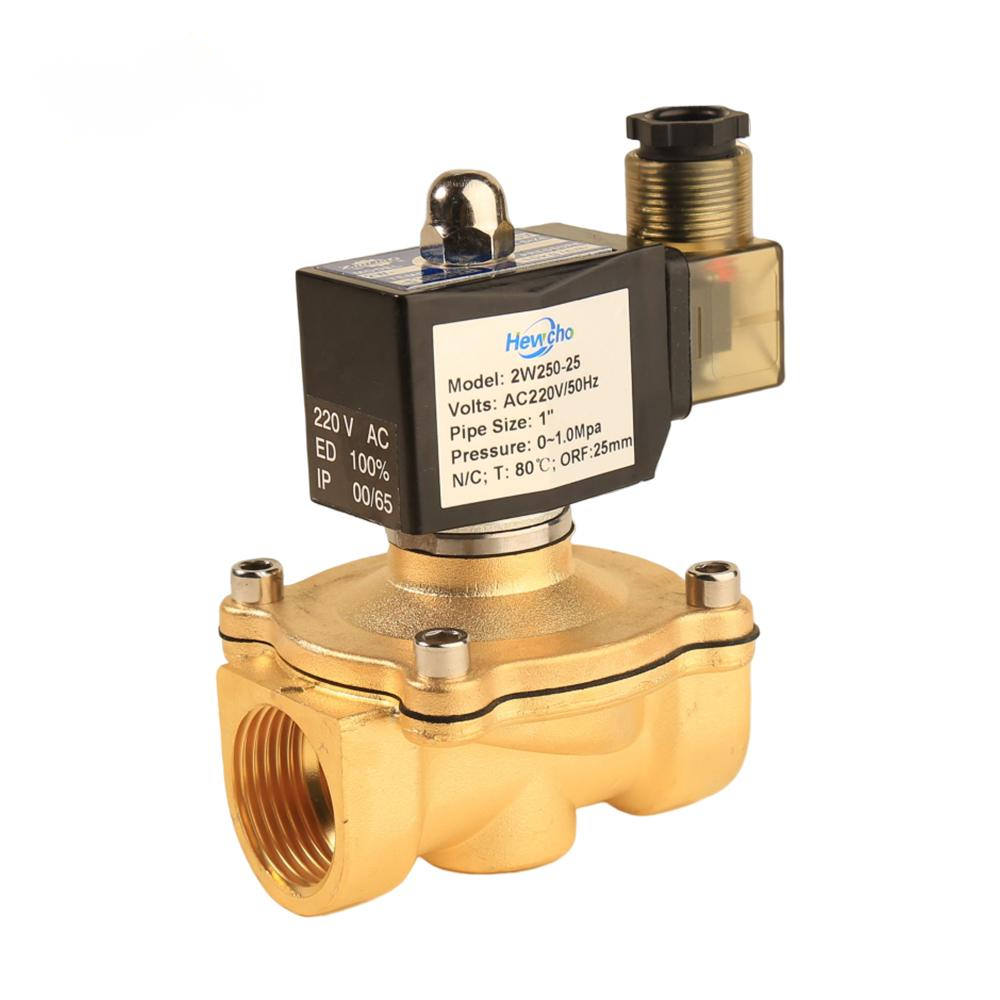
Brass Solenoid Valve
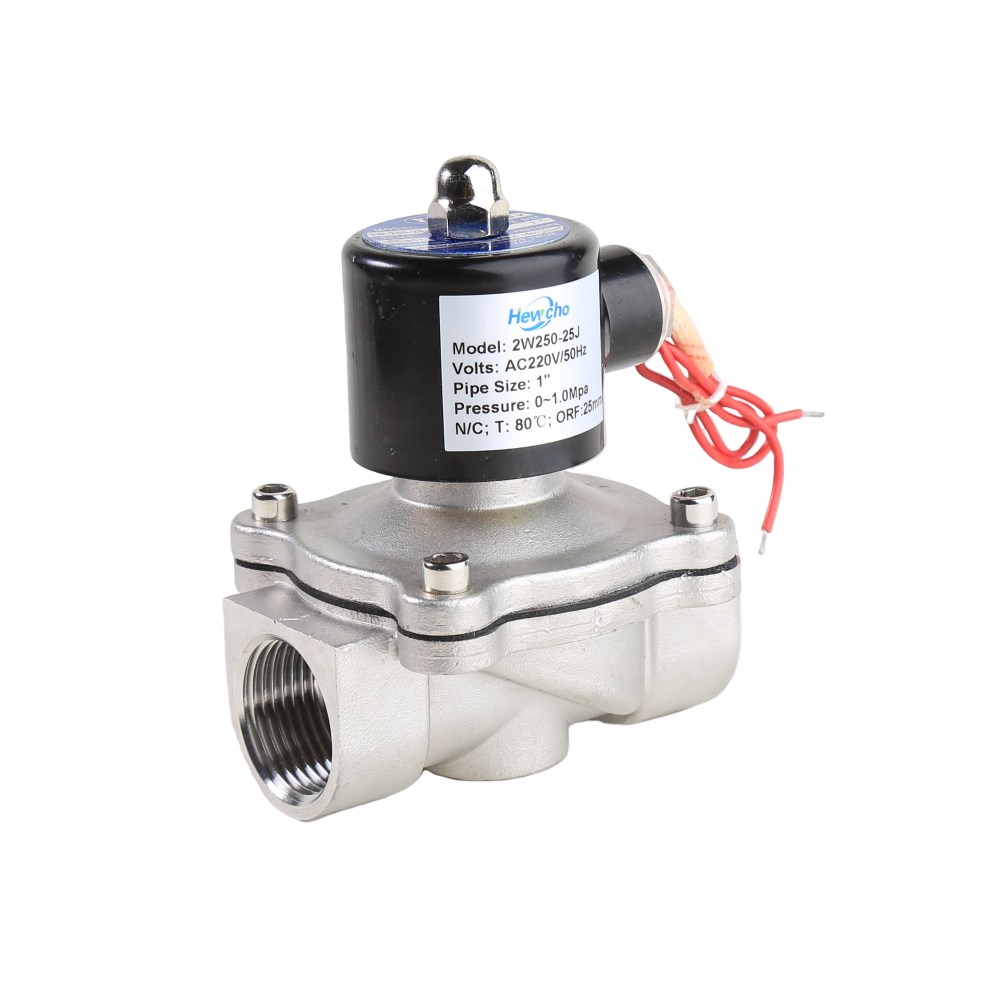
Stainless Steel Solenoid Valve
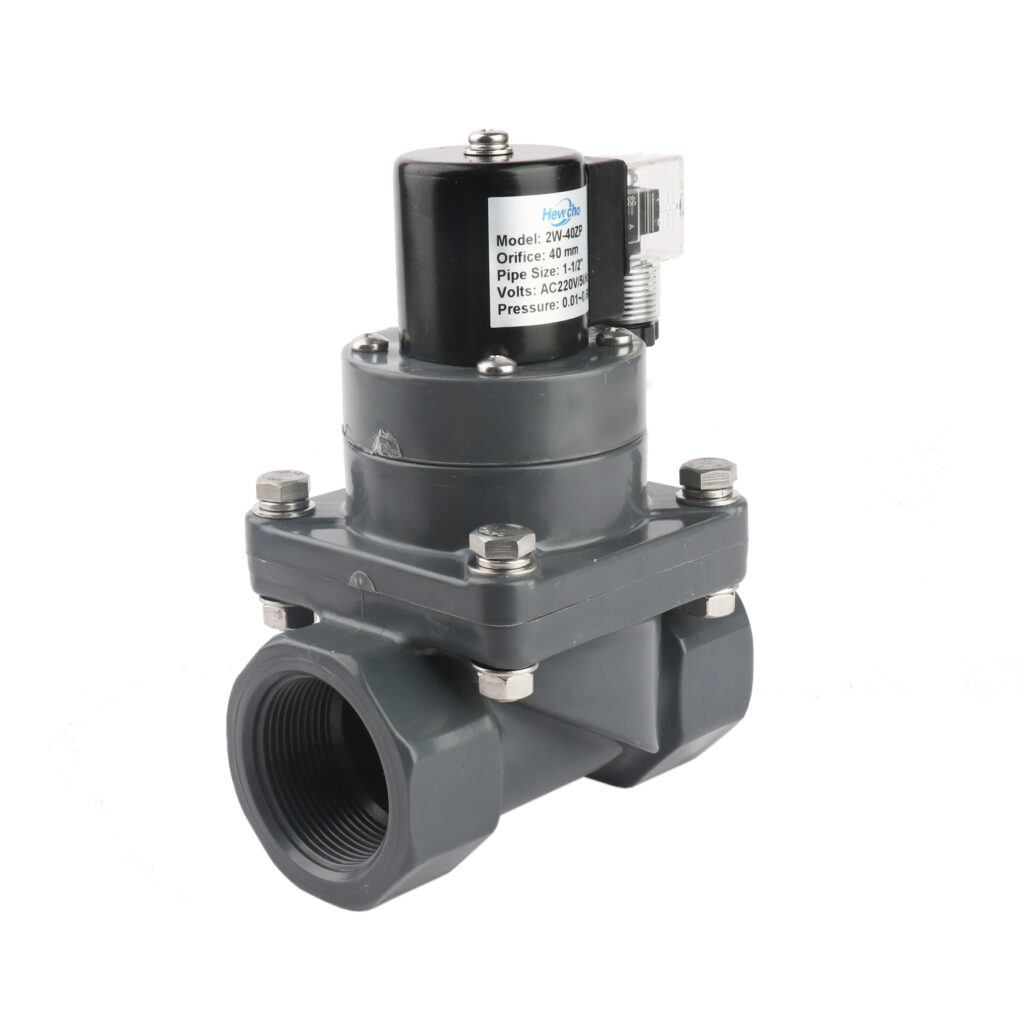
Plastic Solenoid Valve

Cast Iron Solenoid Valve
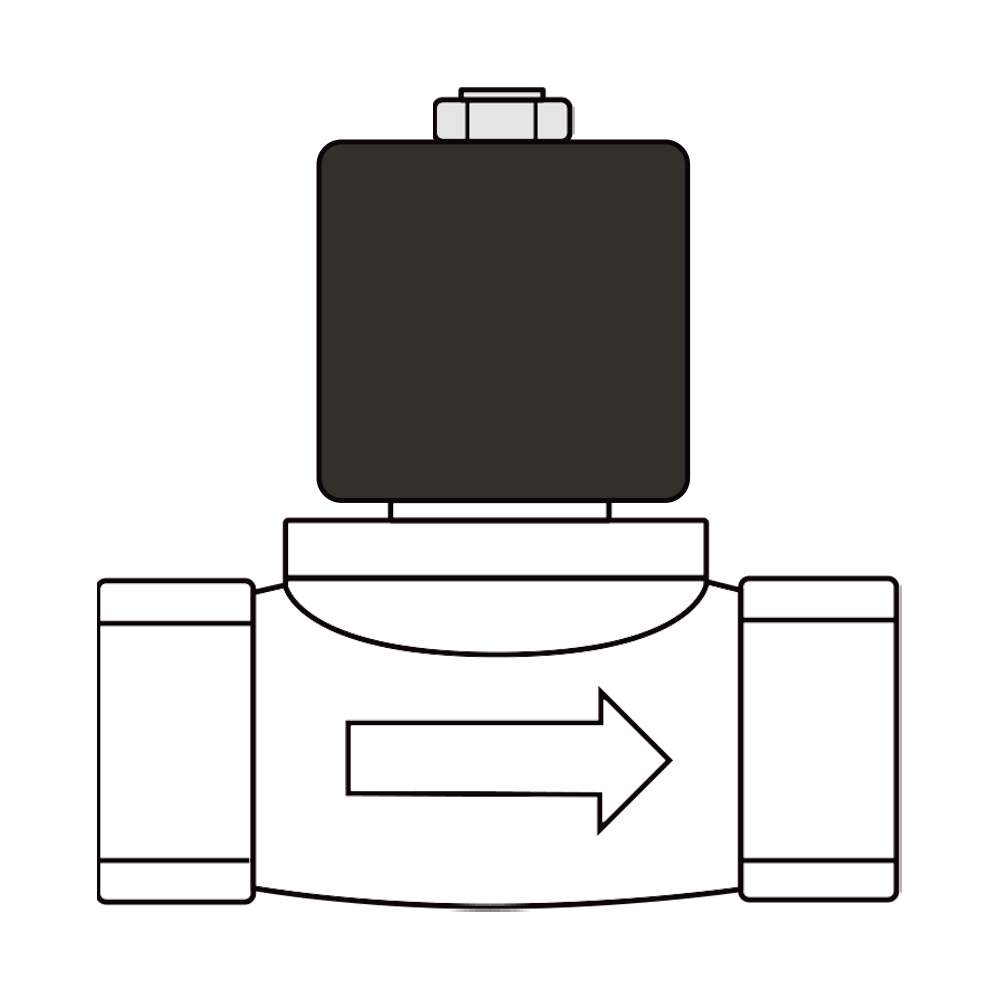
OEM Solenoid Valve
REQUEST A QUOTE FOR MORE DETAILS
All You Need To Know About Solenoid Valves
A solenoid valve operates in response to an electric current, harnessing the power of an electromagnet created by a wire coil known as a solenoid. Within the framework of a valve system, the solenoid assumes the role of regulating the flow of current through the valve. In its default state, a solenoid valve, typically classified as “normally closed,” remains closed as a plunger obstructs the valve’s opening. To initiate valve opening, a simple electric current is passed through the solenoid, generating a magnetic field. This magnetic force elevates the plunger, consequently opening the valve.
Conversely, there exists the counterpart known as a “normally open” valve, which remains in the open position until an electric current is applied to close it.
Manufacturers leverage solenoids to exercise precise control over the distribution, release, or mixing of various substances, whether they are fluids, air, or gases. This adaptability enables businesses to employ solenoid valves across a multitude of applications.
One notable advantage of solenoid valves is their minimal power consumption, coupled with their reputation for reliability, durability, and compact design.


What Are Solenoid Valves Used For?
Solenoid valves are present in almost all industries that need flow control. These could be the following:
- Water Treatment Plants
- Fire Safety Systems
- Petrochemical Industry
- HVAC Systems
- Automotive Industry
- Agriculture
- Pneumatic Systems
- Marine Applications
Solenoid valve Parts
In the realm of industrial control mechanisms, solenoid valves exhibit a design that is fundamentally consistent across various applications. Though specific features can differ depending on the material, media, and intended use, the core components remain largely the same. A typical solenoid valve is composed of four key parts:
Solenoid Coil: This is the electromagnetic component responsible for actuating the valve. Its design may vary based on electrical requirements and environmental conditions.
Valve Body: Fabricated from materials such as brass, stainless steel, or plastic, the valve body houses the internal components and directs the flow of media. It is designed to withstand different types of media and pressure conditions.
Plunger: This component moves within the solenoid coil and controls the opening or closing of the valve. Its construction often varies depending on whether the valve is direct-acting or pilot-operated.
Seals and O-Rings: These are critical for ensuring a leak-free operation. The materials used for the seals could range from Teflon to rubber, depending on the media and pressure requirements.
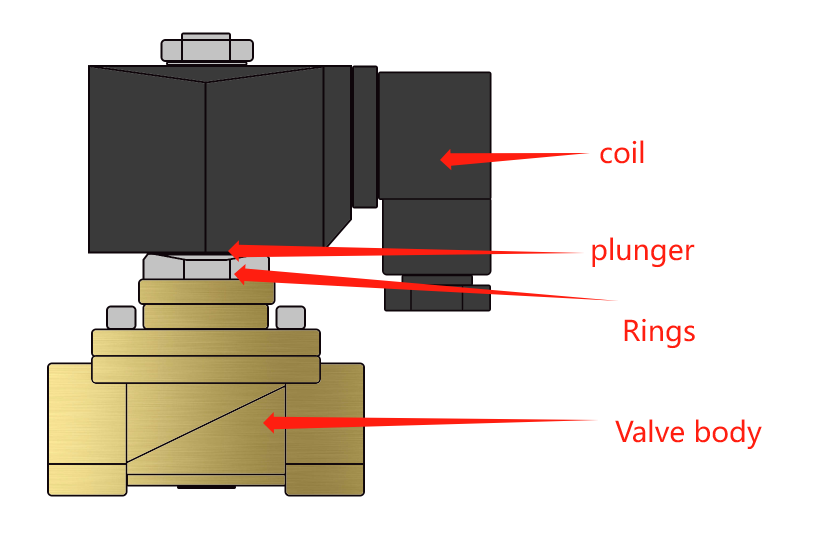
How Does solenoid Valve Work?
An electronic solenoid valve functions as a control mechanism for regulating the flow of liquids or gases, akin to its valve counterparts. Its primary components consist of a valve body with attached wires, with the upper section housing the solenoid and the lower part comprising the valve itself. Notably, the valve can be oriented at various angles to accommodate specific requirements.
Manufacturers may introduce some design variations, and there are distinctions between 2-way and 3-way solenoid valves, the latter featuring an additional exhaust port.
The most basic iteration of a solenoid valve is the directly operated valve. In this design, the upper section typically consists of a coil of wire forming the solenoid. When an electrical current flows through this coil, it generates an electromagnetic field, which in turn governs the movement of the valve.
Since these valves incorporate a solenoid, their operation, whether opening or closing, hinges on the electric current and the valve type (normally open or normally closed).
How to choose the right soleonoid valve?
Material & Fluid Compatibility:Evaluate the valve’s material compatibility with the specific fluid it will control. Account for fluid type, temperature, and potential corrosiveness. Common materials include PVC, brass, and stainless steel.
Actuation Type:Based on system requirements, choose the appropriate actuation method. Options include normally closed (NC) and normally open (NO) configurations. Take note of the response time and power requirements for actuation.
Size & Flow Capacity: Match the valve size with the necessary flow rate and acceptable pressure drop. Accurate sizing ensures optimal performance.
Pressure & Temperature Ratings: Confirm that the valve can withstand the system’s peak pressure and temperature conditions without performance degradation.
Electrical Specifications: Cross-reference the valve’s electrical requirements (voltage, current, frequency) with the system’s available power supply. Consider specifics like AC/DC voltage, coil insulation class, and any hazardous environment certifications.
Safety Factors: Give priority to valves featuring fail-safe mechanisms, such as spring-return or redundant solenoids. Ensure that the valve meets all relevant industry standards and certifications for your power-generation application.
Solenoid Valve Types By Material

In industrial settings, brass solenoid valves are instrumental in controlling a broad spectrum of media including water, oil, and gas. Their durability and performance make them an essential component in systems requiring flow regulation and safety measures, thereby earning trust among pump valve importers, fire plumbing companies, and water treatment plants.Beyond industrial utility, these valves also find extensive application in residential settings. They are commonly used in domestic water supply systems and swimming pools, ensuring smooth operation and minimal maintenance.
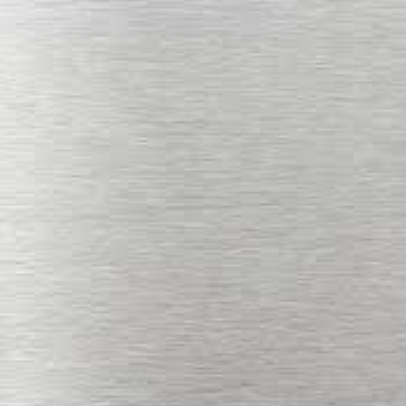
Stainless steel valves are particularly suited for challenging environments that require high resistance to corrosion and temperature extremes. In addition to their superior durability, stainless steel solenoid valves offer the benefit of easy maintenance and long service life.
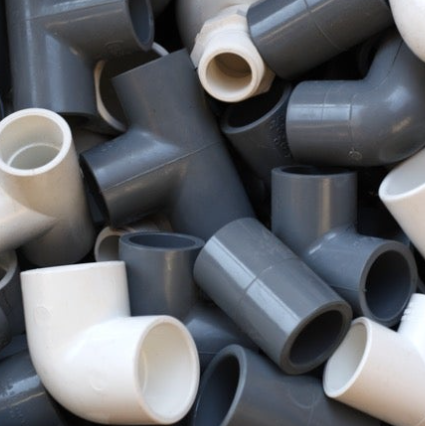
Plastic solenoid valves are crafted from high-grade materials, offering a lightweight yet durable solution for fluid control. Notably, they provide excellent resistance to chemical corrosion, making them ideal for applications in industries like chemical processing, pharmaceuticals, and wastewater treatment.
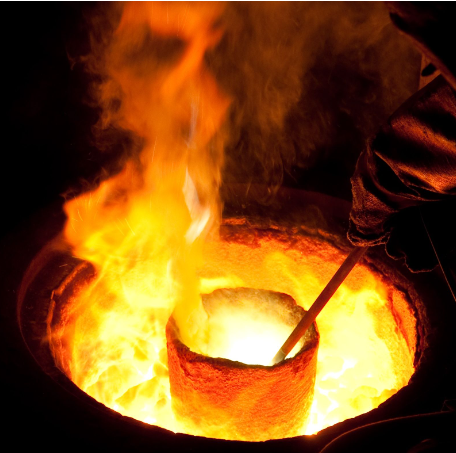
These valves combine the strength and durability of cast iron, making them particularly suitable for high-pressure and high-temperature environments. With their excellent wear resistance. Furthermore, their long service life and low maintenance requirements make them a cost-effective solution for your fluid control needs.
Electric Solenoid Valve VS Motorized Ball Valve
PROS AND CONS OF SOLENOID VALVES
Solenoid valves offer numerous advantages with a few accompanying limitations, underscoring the importance of selecting the appropriate valve type for specific applications.
Solenoid valves exhibit rapid response times, capable of operating with both AC and DC currents, enabling near-instantaneous opening or closing of flow channels within the system.
Thanks to their straightforward design, solenoid valves boast low power consumption. They require electrical input solely for transitioning and maintaining the “on” position, without any power consumption to hold their “normally open” or “normally closed” state. However, it’s essential to note that continuous power is necessary to maintain a position, which can lead to heat buildup in the coils, potentially causing valve damage if left in the “on” position for extended durations.
Solenoid valves present a cost-effective option, suitable for many systems due to their ease of installation and maintenance. Unlike their alternative, the ball valve, solenoid valves can be refurbished by replacing worn-out internal components like coils.
While they possess high-cycle capacities, solenoid valves have limitations concerning back pressure and inlet pressure due to distinct internal configurations in the flow path. Additionally, pressure differentials necessitate pilot designs, and if a higher flow rate is required, a motorized ball valve may be a more suitable choice. It’s worth mentioning that solenoid valves lack manual overrides, potentially leading to water hammer issues resulting from rapid closure.
Most solenoid valves operate using an internal diaphragm and plunger mechanism, which can be vulnerable to problems when particles are present in the line. Debris can prevent proper sealing, resulting in leakage. Although most valves can be serviced, this is an area where ball valves excel, as they don’t rely on a diaphragm for sealing and can handle a more significant degree of particulate matter and debris.
PROS AND CONS OF MOTORIZED BALL VALVES
Motorized ball valves, much like their counterparts, come with their own set of advantages and disadvantages.
One notable advantage is their capacity to maintain high flow rates even in the presence of a pressure drop. Because they lack a diaphragm, they boast a higher Cv value, indicating a superior flow rate when compared to solenoid valves of the same size.
Similar to solenoid valves, motorized ball valves offer an economical and relatively straightforward installation process. They seamlessly integrate into automation systems through a variety of devices, including personal computers and even Raspberry Pis. Moreover, the total operational cost of motorized ball valves is lower than that of solenoid valves since they do not require continuous power to maintain their position. This characteristic not only reduces operating expenses but also mitigates the risk of burnout, a common issue with solenoids.
However, motorized ball valves do have some drawbacks. They operate slightly slower than solenoid valves, although this reduced speed may be advantageous for systems prone to the water hammer effect, as it prevents abrupt and sudden flow stoppages.
Another drawback involves potential wear and tear within the ball valve itself. Suspended particles traveling through the system can lead to wear or jamming of the ball. While motorized ball valves are generally more resilient to regular wear and tear compared to solenoid valves, this factor should still be considered.
In the event of internal component damage, servicing motorized ball valves can prove more challenging. The precision machining of the ball to fit within the system means that damage to the ball may render the valve unusable, as it cannot be easily replaced—a contrast to solenoid valves, which often offer the option of rebuilding.
GET A FREE QUOTE
Send us a message if you have any questions or request a quote. Our experts will give you a reply within 24 hours and help you select the right valve you want.
+86 153 1452 4332
info@hewchovalve.com
